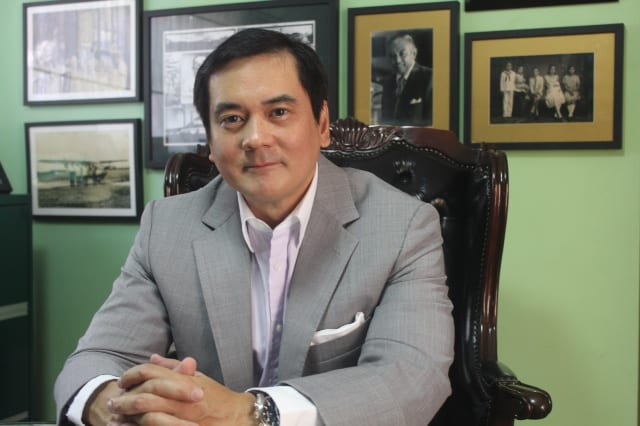
Q1: Why is Private Equity (PE) better than getting bank loans, crowd sourcing or getting friends/relatives as partners?
A: PE has its strengths and draw backs and ultimately it is up to the Sponsors/ owners of the business to assess whether they see a fit with an outside party investor and their overall strategy and funding requirement. If the Sponsor is simply looking for low cost credit then a bank loan will do as a PE fund provider (or any other equity investor) provides high cost of money that is much more than a bank debt. On the other hand, if the entrepreneur is looking over and above financing cost such as value add in terms of strategic direction and insights, promotion of ESG principles (Environment, Safety, Governance), adoption of best practices, work with owners develop KPI (key performance indicators)and budgeting, monitor and review financial and operating results, tapping on the Funders regional or global network and resources, leveraging on those connections, among other value enhancing strategies, then a PE Fund would be the logical choice. Moreover, a PE investor would normally require board representation and representation to key committees of the company. Usually, the PE takes on a pro-active role in the company by contributing in terms of growth strategies but not in day-to-day management. The purpose of all these initiatives is ultimately to enhance shareholder value.
Q2: What is the ideal company you look for when investing?
A: PE Fund in contrast to a Venture Capital Fund (VCF) is that the former will only invest in companies with a proven track record and is looking for growth capital to expand an already operating and flourishing business. Whether the business is sustainable in the coming years needs a thorough discussion and evaluation between the potential investor, the owners, and the management team. The VC Fund, on the other hand, is usually a focused or dedicated fund that target specific sectors or industries and employs sector specialists and is prepared to invest even on a start-up basis and as you would expect require higher returns for the higher risks they take.
Q3: Your PE Fund avoids start-ups and prefers investing in growing companies, what is the insight behind this? Did you get burned investing in start-upsbefore?
A: There have been various case studies, statistics, including lessons learned from the past that indicate a very low rate of success for start-up businesses or rescue or turn-around investments versus businesses that are already profitable and looking for growth capital. I subscribe to the mantra that investors should focus on driving growth and efficiency rather than fire fighting!
As a PE Fund, we look at businesses that have a proven track record and looking for growth capital and armed with a credible 5 year plan. Given our track record of investing and divesting in various companies in the county, the Fund performance in the Philippines and overall in Southeast Asia has been very encouraging and for this reason we are operating a second Southeast Asian Fund.
Q4: What arrangement will make PEs comfortable in terms of percent ownership, board representation, and veto power and exit timetable?
A: Equity investors will require certain minority rights and different investors have different requirements. As a baseline, investors would require board representation (although some may not or may not qualify given their equity stake); clear use of proceeds; minority consent on matters involving the sale and purchase of assets, tag-along rights, anti-dilution rights, remedies in the event of a breach or default, would be common minority shareholder rights.
Nurturing companies and helping their owners create value takes time and as such we take a long term view in making investments and 5 years on the average is sufficient for the type of sectors we invest in. But the most critical aspect that PE investors need to look for in assessing a company is whether there is alignment of interest with the founder or the major shareholder. No matter how good a business is but if there is no alignment of interest with the Sponsor, then there is no point in making the investment.
Q5: When your group exited a chain of restaurants in 2014, your internal rate of return (IRR) for 8 years was much more than putting your money in the bank. But you made much more in a hospital. What factors do you consider as attractive for each industry? What is the usual premium ceiling you are willing to pay to protect your IRR?
A: The risk a PE is exposed to should be compensated by the return it expects. Certain businesses may be cyclical than others and the owner or management team have no control of external variables while other businesses have flourished regardless of global conditions. Export oriented businesses are cyclical and one would have to take a view of the business and where it’s at in the cycle. Businesses like food retail, healthcare, education, logistics, tend to be robust and are unaffected by global conditions. Risks can be further mitigated if the company has a profitable track record; strong brand equity; manageable debts; alignment of interest with the owner; a professional management team; and beyond these a credible growth strategy.
In terms of returns to the Fund, we look more at cash multiples (the absolute amount of money) that is generated by the investment more than the IRR. The returns are highly influenced by your entry and exit price, the cash flows the investor receives in the interim which is a function of the overall health of the business. It goes without saying that as shareholder value is built-up over time, both the owners, investors, management teams, and other stakeholders benefit.
Q6: Instead of straight equity infusion, when do Private Equity invest in companies by way of convertible loan notes where the PE has the right to convert loan to equity at predetermined prices?
A: Different Funds have different approaches. It’s a common practice by PE funds to invest in quasi-equity instruments like convertible notes or preference shares whilst investing in common shares or a combination of all these. Each type of instrument has different impact on the balance sheet. A convertible note would be booked as a liability while preference shares will be booked under capital accounts. A PE evaluates the balance sheet of the company to be able to structure the right instrument taking into account minority rights and the risk profile of the business in the event it does not go well or even from a bankability point of view.
Q7: PEs impose a ‘Put’ option when the key result areas (KRAs) agreed with owners are not met for consecutive years. When is this option really exercised?
A: A ‘put’ is an exit measure that is usually resorted to as a last option. Only after a careful deliberation and study on why targets fell below budgets and consistently and having exhausted remedies would the PE consider invoking the put option. Prior to that, the investor would sit with the owner and the team to discuss corrective action plans, defining the action, assigning accountability, and setting a time frame. The corrective action plan could include hiring the right person for the job. If despite these measures having been set and the KRAs still lag behind and there appears to be neither solution nor willingness on the part of the owners and/or management team to implement the measures would a Fund resort to the put. Violations of the terms of the investment agreement could also trigger an early put.
Q8: For companies expanding, how much investment can you offer? How long does due diligence take and what do you look for in due diligence?
A: The Fund that I work for will look at investments were there is a need of US$15m+ and in the event the business opportunities requires much more, we can explore co-investment or a separate fund also operated by us could be tapped to provide that particular funding need.
From the time a term sheet or letter of interest is signed from my experience it would take about 3 months to disburse the funding requirement.
In terms of due diligence these would fall generally under 3 categories which are: legal, commercial, and financial. Depending on the complexity of the business other types of consultants or industry or technical experts will be brought into the due diligence.
Q9: What would you consider would be the challenges to PE in the country or how would you describe the PE landscape in the country?
The challenges PE faces in the country today include high valuations and competition from local strategic buyers. For instance, the Philippine Stock Market is currently trading at 20x Price Earnings. The Philippine equity market has consistently ranked at the top 5 stock exchanges globally for the last 5 years. Given the solid macro fundamentals of the country and the earnings growth of companies over the last 8 years, owners of businesses demand higher values for their businesses. A PE investor would, therefore, have to look long and hard whether the price asked for is justified and defensible and whether the growth trajectory is sustainable in the coming years to warrant the price that is asked. In my experience, valuations would be the first hurdle and deals can’t get done if there is no meeting of minds. The second challenge that PEs experience is competition from local strategic players. Local strategic players have a much quicker reaction and turnaround time since they know the business or have a better feel of the business than do most PE players. Strategic players tend to have a more aggressive view on valuations simply because they have a much longer time frame than do PE investors.
Q10: Can you share with us your personal high and lows in the course of your investments or lessons learned in private equity?
I have always found the practice of private equity a fruitful and fulfilling experience. I say this because once an investment is made, the real work begins. PE requires a long term commitment on the part of the Investor and owners and the management in driving the business towards a common goal.
As investors, we do not purport to know more than the owners who built the business but given our knowledge and investment experience in similar businesses, we can share various insights to help enhance the companies we invest in. As I mentioned earlier, our investments and track record has been very encouraging and the companies that have adopted best practices, good governance, ESG principles, recognizing investors as genuine partners, and in full alignment with us have grown substantially throughout our investment holding period and their values have been validated in the public markets or by third party investors and this is the part that makes PE rewarding. On the other hand, I have seen companies that have resisted change that is from adopting best practices, governance, and owners who value loyalty over ability tend to lag behind in our overall investment portfolio but also within their peer groups or industry and it is in this aspect that has been frustrating to our practice.


